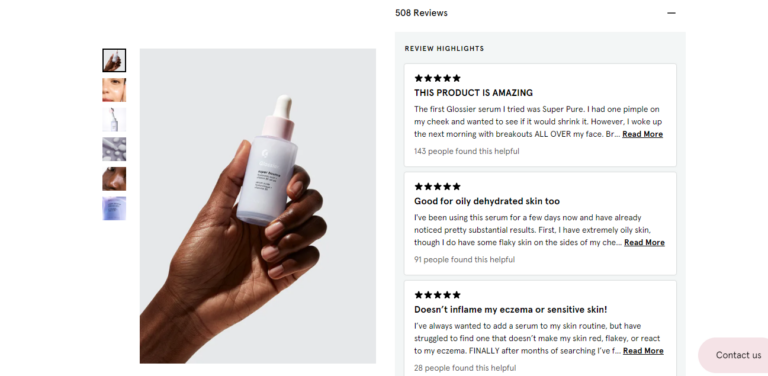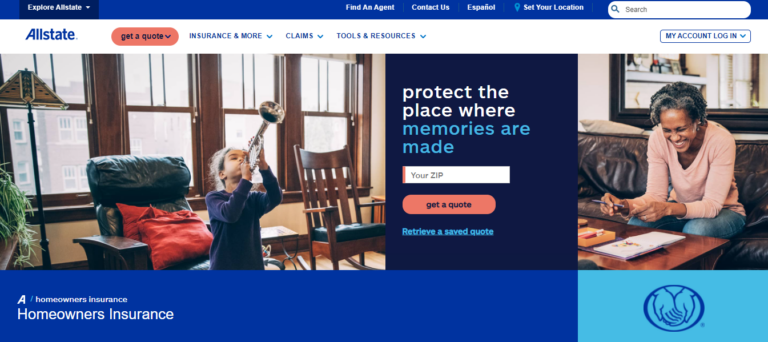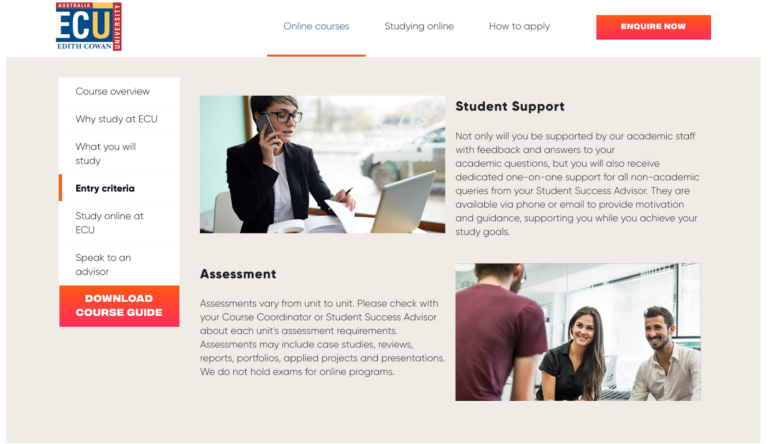As marketers, it’s important that we recognize this and learn how to leverage stories that connect with our audience’s emotions. This in turn can improve our conversions.
According to a study from Harvard Business Review, connecting with customers’ emotions is a powerful strategy for converting more prospects and getting more sales for your business.
After researching hundreds of brands, the researchers found conversions increased significantly when companies used emotional marketing in thoughtful and systematic ways. In some cases, new customer growth increased by up to 40%.
It’s getting harder to market products and services because the landscape is getting more and more competitive. To help your brand stand out, you must develop an effective system. This article sheds light on emotional marketing and how you can use it to get more results from your efforts.
Create videos that drive action
Activate your audience with impactful, on-brand videos. Create them simply and collaboratively with Biteable.
What is emotional marketing?
Emotional marketing aims to tap into your ideal customers’ emotions so you can get the desired response from them — most of the time, you’ll want to make a sale.
This kind of marketing can be very effective as it inspires people and connects with them in a personal way. It allows you to form a stronger connection with your customers by appealing to their deepest emotions, needs, and desires.
As consumer neuroscience expert Roger Dooley puts it, the proof is in the pudding when it comes to emotional marketing.
After looking at 1,400 case studies of successful advertising campaigns, researchers discovered campaigns with purely emotional content performed roughly twice as well (31% to 16%) compared to rational campaigns.
Dooley and other neuromarketing experts attribute this to two proven facts about our brains: our brains can process emotional input without being cognitively aware of it; and our brains record emotional stimuli more powerfully than other stimuli.
There are many ways to apply emotional marketing to your own business. The way you do it will depend on your specific customers and what motivates them. But as a starting point, here are five proven strategies for using emotional marketing to get results.
1. Create a sense of urgency to inspire FOMO
As humans, we always want to be a part of things and don’t like being left out of the loop. FOMO is an abbreviation for “fear of missing out” and it happens when people feel like they aren’t being included in a particular activity.
FOMO marketing takes advantage of this emotion and uses it to prompt your audience into making a purchasing decision so they don’t miss out on a product or service that is benefiting others. Creating a sense of urgency with your marketing content helps inspire FOMO in your target customers.
Digital marketing influencer Neil Patel agrees. He points to a study of millennials that found up to 69% experience FOMO when they can’t attend an event. Neil urges marketers to apply this same concept to their Facebook ads, not just for events but for all products and services.
Search Engine Journal recommends setting deadlines as a way to create time pressure and trigger urgency in your prospects.
For example, you could offer a limited-time sale on a particular product and tell customers it expires in three days. Potential customers who have been dragging their feet might finally be motivated to get your product before the price increases.
Indicating a product is exclusive or in high demand is a great strategy for highlighting the scarcity of the offer and creating a sense of urgency. In your marketing copy, you can use words like “limited offer”, “exclusive”, “limited stock”, “don’t miss out”, “hurry!”, “only 5 days left”, and so on.
How Amazon uses FOMO
Amazon is a company that frequently plays on its customers’ FOMO.
If you go to their website, you’ll see items tagged as “Deal of the Day” offers. As the name suggests, those items are only available at these prices for 24 hours.

When customers browse through the website and see that they have a limited time to take advantage of an offer, it ignites their FOMO and they will be more likely to make a purchase immediately.
The Wall Street Journal reports this type of emotional marketing gets big results for Amazon sellers.
When Tea Forté Inc’s loose leaf tea samplers and steeping mugs were featured as a deal of the day on Cyber Monday 2017, the company pulled in 6.5x their normal sales volume.
2. Build social proof through user-generated content
If you want your ideal customers to shop with you, you need to earn their trust. One of the most effective ways to do this is by creating social proof, evidence that others have purchased and found value in a particular product or service.
When Stackla surveyed 1,590 consumers about their buying habits, it found people prefer to trust recommendations from a real consumer over that of a brand.
79% of survey respondents said user-generated content like images, reviews, social media posts, or comments highly impact their purchasing decisions. This is compared to only 13% who listed content from brands as highly impactful.
According to a survey by Podium, 97% of consumers say online reviews influence their buying decisions.
When you highlight user-generated content, you show potential customers that other people just like them have had a positive experience shopping with your business. This is powerful social proof to promote your brand’s image, instill trust, and boost sales.
Glossier user-generated content
Online beauty store Glossier is an example of user-generated content. On their product pages, they do a good job of displaying customer reviews right beside each item.

On the product page for their hyaluronic acid pro vitamin B5 serum, you’ll find lots of positive reviews and 5-star ratings.
This kind of user-generated content builds trust and allows potential customers to imagine the kind of great results they’ll see from using Glossier’s products, which might just be the push they need to finally make a purchase.
Baby Riddle “customer experiences”
Baby Riddle is another example of creating social proof through user-generated content.

On each product page, the up-and-coming clothing company features a section called “customer experiences”. Here, they display photos taken by satisfied customers.
The babies in those photos seem to be having a great time wearing their Baby Riddle outfits. This is the kind of genuine, user-generated content that would tug at the emotions of any prospective customer and potentially motivate them into buying the product.
3. Create a sense of aspiration with real-world images
Emotional intelligence experts point to joy as an important emotion characterized by a sense of energy and possibility.
If prospective customers see everyday people (just like them) experiencing happiness and fulfillment while using your products, they’ll want a slice of this same joy. One of the most effective ways to do this is with images of people that represent your target audience.
The team at VWO conducted A.B tests to determine if human photos increase website conversions. They found conversion rates were higher when they switched product images for photos of real people, because the audience connected more with the human photos.
The idea here is that after seeing these images, people will aspire to buy your products because they can more easily imagine creating this same sense of joy in their own lives.
If you don’t have the resources or skills to create your own visuals, there are plenty of sites that offer free images and pictures you can incorporate into your marketing.
AllState and emotional marketing
Allstate helps protect its clients by providing auto, home, and business insurance. Their homeowner’s insurance website includes pictures that say to prospective customers, “Look. There are people just like you who live happy lives because they decided to buy an Allstate policy.”

This is intended to play to the emotions of future homeowners, helping them imagine what it’s like to not have to worry about protecting their belongings.
When it comes to choosing emotive imagery for your marketing, you could focus on images of real people either using your products or enjoying the benefits of your services. For example, if you sell skincare products, you can create a shot of a customer surrounded by friends, enjoying a feeling of self-confidence because of their improved skin.
Edith Cowan University real-world imagery
Many colleges and universities also use this type of emotional marketing, using photos of students taking classes and interacting with one another.

Edith Cowan University (ECU) is one example of this. On the information page for their online Master of Counselling course, they include photos of people who look like they are currently taking the program, including group pictures showing students interacting with one another.
This type of imagery encourages prospective students to visualize themselves in an educational space with their peers and consider what it would be like as a member of the community. It might just be enough to convince them to enroll.
4. Use powerful images to tap into customers’ stress and anxiety
Showing customers that you understand their stress and anxiety can help you to secure more sales. For example, a carpet cleaning company could provide an image of a spilled glass of wine or a pet groomer could use images of a dirty dog in a clean house.
These kinds of images tap into the anxiety of customers who are already having issues and looking for a solution to them. As entrepreneur and sales expert Jeff Shore explains, highlighting customers’ stress and anxiety creates a sense of urgency.
But be careful. Avoid going overboard and turning customers off. Jeff suggests pairing stress-inducing images with those that depict future promise, or “what ‘right’ looks like.”
USAA gets fear marketing right
Heading back to insurance again (it’s an emotional subject!). Military insurance company USAA is a master at threading the needle between fear and future promise.

Their most recent auto insurance commercial opens with a rainy nighttime shot of a shattered windshield and ambulance lights. Although we learn right away that “Sgt. Houston” is unhurt, we still imagine what could’ve happened if she hadn’t been so lucky.
These images tap into the stress and anxiety of prospective clients who’ve imagined themselves in a similar situation.
We also learn that in the aftermath of the accident, Sgt. Houston left her beloved grandfather’s dog tags behind in her car. Again, a fear of loss even if it’s on a smaller scale.
But lucky for Sgt. Houston, her USAA agent not only takes care of her car, but the agent also “pulls a few strings” and retrieves her grandfather’s dog tags before the totaled car heads to the junkyard.
As Jeff Shore explained, USAA gives prospective customers a series of stress-inducing images paired with ones depicting “what ‘right’ looks like.”
Florin Roebig balances anxiety with promise

Another example is law firm Florin Roebig. On their page describing how clients can get compensated after a motorcycle accident, they include images of a real accident showing a damaged motorcycle on the street.
This image taps into the stress and anxiety of prospective clients who might have been in the same situation. That stressful image is paired with reviews from satisfied clients describing how their lives were improved after hiring the firm.
You can replicate this same emotional marketing tactic with your own company. Identify things that stress or irritate your target audience and then find pictures to visually represent those situations. Next, create quality content depicting how things will look once your business takes control.
5. Make customers feel understood by addressing their pain points
Most of all, customers just want to feel understood. If you can create content that answers their questions and addresses their pain points, you show that you understand and are able to help them.
According to Neil Patel in his guide to creating better content, brands see tremendous results from their content when they focus on customers’ needs and pain points.
Creating helpful content can also help you secure backlinks as people might want to share your useful suggestions with others. Backlinks are important because they help you rank higher on relevant search engine result pages and they can also widen your audience, increasing your website traffic.
Freshdesk understands its customers
Freshdesk is an all-in-one platform that helps businesses organize their customer service efforts. On their website, they’ve published a blog post about how to make your company more customer-centric.

As a company that focuses on customer service, Freshdesk knows that most of their clients might need help with viewing their businesses from their customers’ perspectives. So they created content that addresses this particular pain point and provides practical solutions for solving the problem.
Many prospective customers in their audience will be grateful for this kind of content. They will see Freshdesk as a company that understands their unique pain points, and because of this, they might trust them as the service solution for their business.
Create powerful emotional marketing with video
Video is an incredibly powerful tool for evoking emotion. With Biteable, the world’s simplest video maker, creating studio-quality content is easier than ever.
Choose from over 1.8 million quality images, stock footage, animations, and video templates. You’ll have your first emotional marketing campaign ready and rolling before you can say “pass me the tissues.”
- About the author
Alex Ratynski, Content Strategist @ Loganix
Alex Ratynski is a Content Strategist at Loganix, an SEO fulfillment partner that works with agencies and marketers. The company focuses on helping businesses to improve their online visibility, so they can grow and reach their goals.
